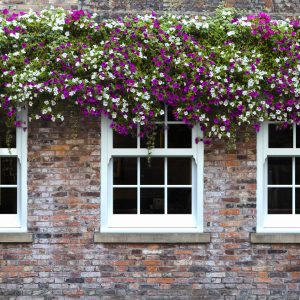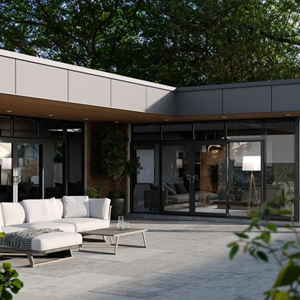Guide to Different Types of Windows for Your Home
Share this story!
Share this post to any popular social media, email it to a friend or print it off.
What Are the Different Types of Windows?
- Sash Window
- Casement Window
- Bay Window
- Tilt and Turn Window

With so many variations of windows styles available for homes, it can be difficult to choose the ideal windows for you. If you’ve ever wondered what are the main types of windows? the answer usually starts with the most common window opening types, such as casement, sash, tilt and turn, bay, and fixed designs. Each of these offers its own benefits in terms of ventilation, appearance, and practicality.
Beyond these, there are also different window styles to suit specific needs, including French windows, shaped frames, and contemporary slimline aluminium options. Understanding the key differences between these styles makes it easier to select the right windows that balance function, efficiency, and design for your home.
Sash Window
Since the late 17th century, sliding sash windows have been a popular choice for homeowners across the UK. Comprised of two vertical sliding sashes (hence the name), these windows were traditionally made of timber but are now usually manufactured in uPVC.
Older sash windows operated using a clever system of weights, cords and pulleys that counterbalance the heavy glazed frames, making them easy to open and close. Modern sash windows, like ones manufactured by Quickslide, use more compact, low maintenance systems like spiral balances or constant force springs.
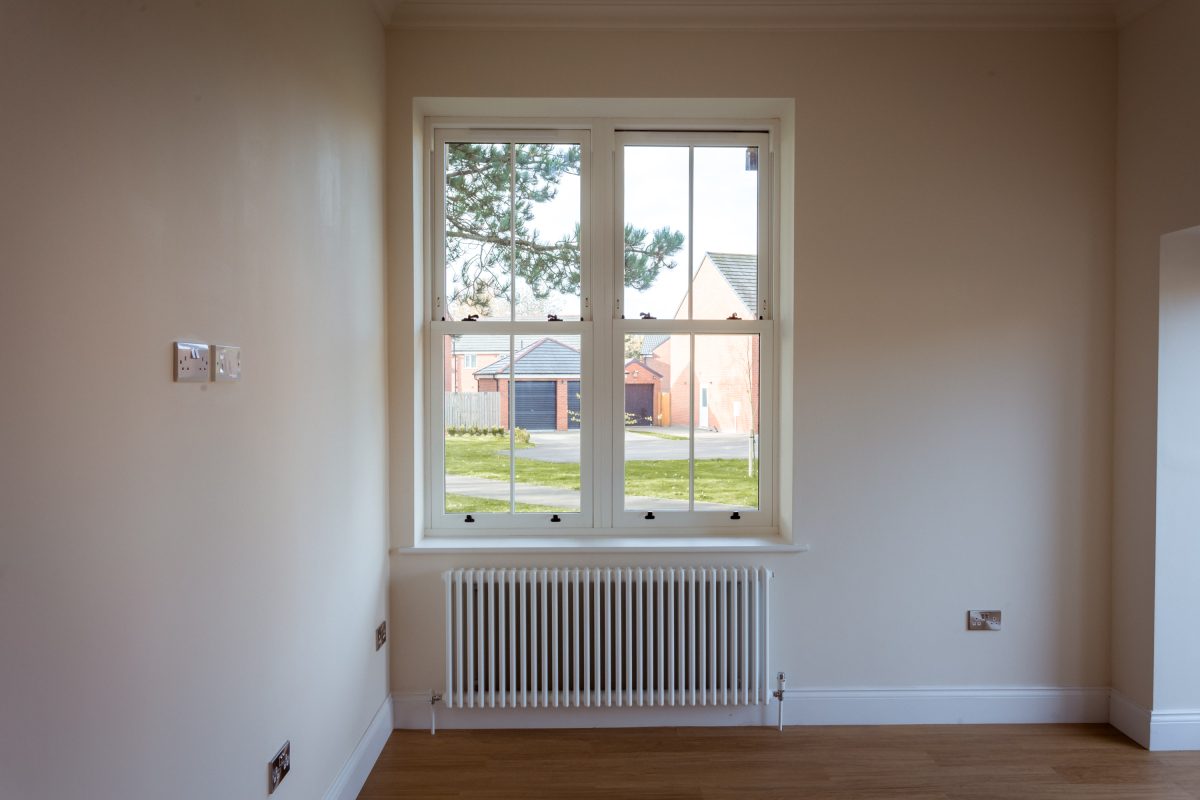
Casement Window
You’ll have seen casement windows in the majority of new or renovated homes in the UK, often plain white uPVC chosen for affordability rather than style. However, they don’t have to be boring.
Casement windows are side- or top-hinged, opening outwards to let in fresh air and maximise natural light. Traditionally made from timber, they’re now more commonly manufactured in uPVC or aluminium, offering improved energy efficiency and minimal maintenance. Modern casement windows combine slim frames with secure locking systems and a wide choice of finishes, making them a versatile option that can suit both contemporary builds and period-style properties.
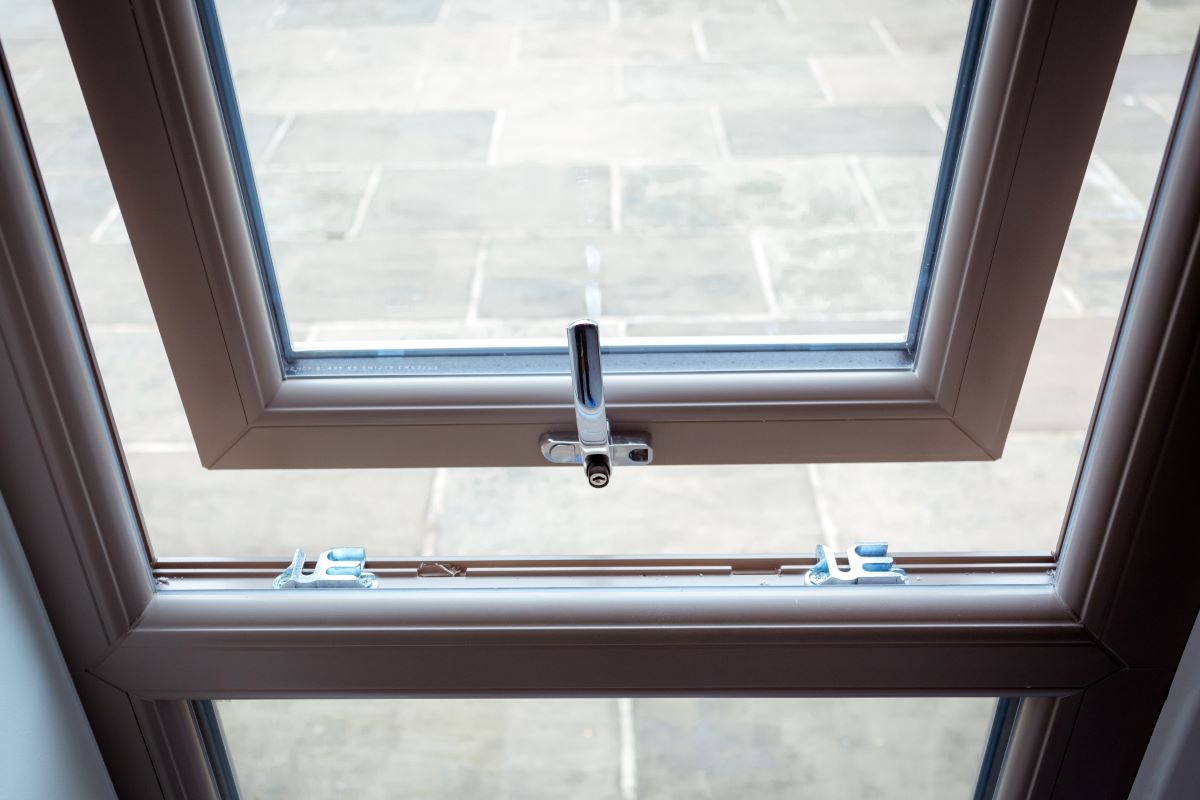
Bay Window
Bay windows are instantly recognisable thanks to the way they extend outward from a property, creating a feature that adds both space and character. This projection not only brings in more natural light but also gives homeowners the opportunity to enjoy wider views and even create a cosy seating area inside.
While they remain a hallmark of period architecture, modern bay windows are built with advanced materials like uPVC and aluminium, making them warmer, safer and easier to maintain than their traditional timber counterparts. With endless style and finish options available, a bay window can transform the look of a home while enhancing day-to-day living.
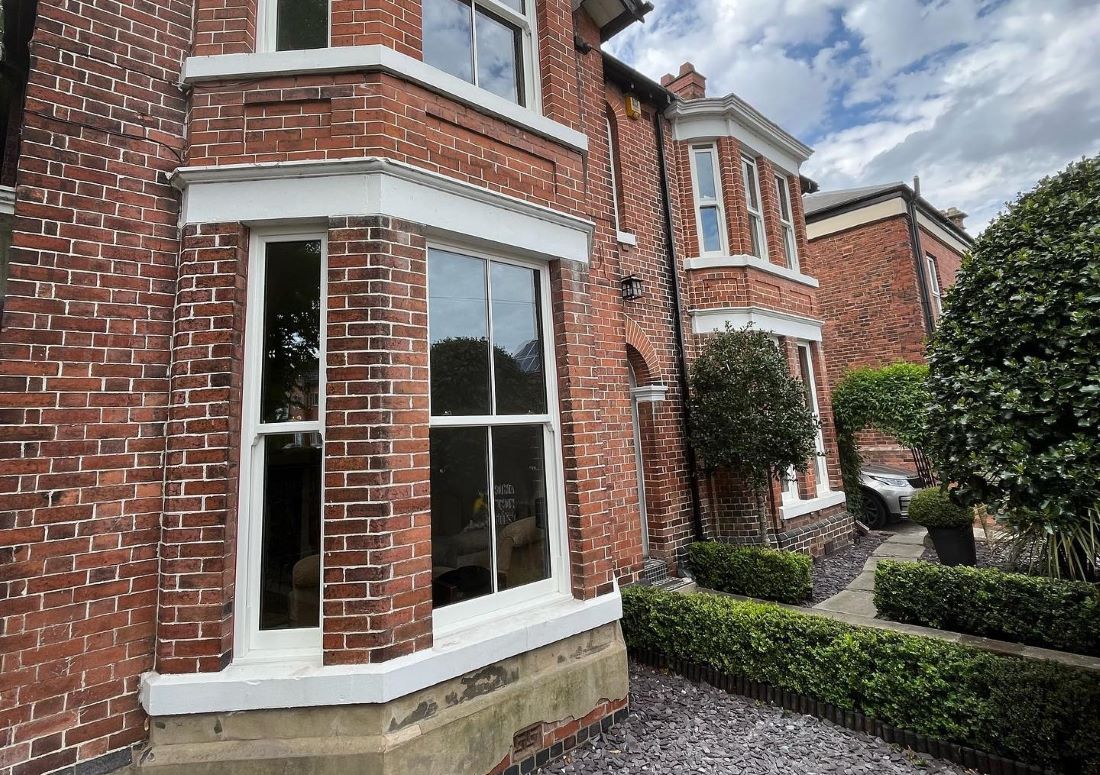
Tilt and Turn Window
Tilt and turn windows open in two ways: tilting inwards from the top for ventilation or swinging open from the side for a full opening. This makes them practical for easy cleaning and useful in certain settings, such as high-rise buildings.
However, the inward opening design can sometimes be less convenient in everyday homes, particularly where space is limited or where curtains and blinds are fitted. While they offer versatility, tilt and turn windows are less common in the UK compared to more traditional styles like sash or casement windows, which tend to better suit the look and feel of most properties.
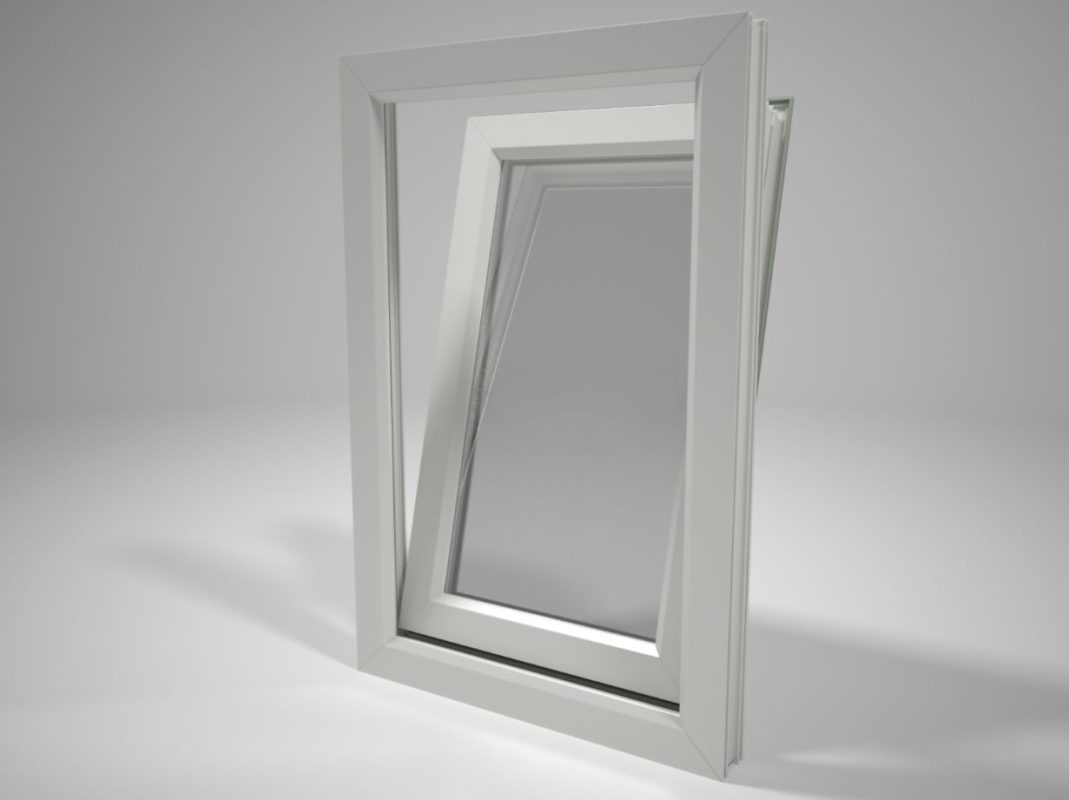
Window Frame Types and Materials
- uPVC frames
- Aluminium frames
- Wooden frames
uPVC Frames
uPVC windows are the most popular choice in the UK thanks to their affordability, low maintenance needs, and excellent performance. Unlike timber, they won’t rot or need repainting, making them a practical option for modern households.
Available in styles ranging from traditional sliding sashes to modern casements, bays and tilt-and-turns, uPVC offers plenty of versatility. With a wide choice of colours and realistic woodgrain finishes, they can complement both period properties and contemporary homes.
Highly energy-efficient and secure, uPVC windows combine insulation, durability and multi-point locking systems, making them a reliable all-round choice for homeowners.
Aluminium Frames
Aluminium windows have grown in popularity in recent years, particularly in contemporary homes and new builds. Known for their strength and slim sightlines, they allow for larger panes of glass and a more modern, minimal look. Unlike timber, aluminium won’t warp or rot, and it requires very little maintenance beyond cleaning with soapy water.
They also offer excellent durability, often lasting decades, and can be finished in a wide range of colours to suit any property. While aluminium tends to be more expensive than uPVC, many homeowners see the premium as worthwhile for the sleek design and long lifespan.
Wooden Frames
Timber windows have a long history in British homes and remain a traditional choice, especially for period properties and conservation areas. They can add character and authenticity, but they do come with challenges. Timber is naturally prone to warping, swelling and rot, particularly in the UK’s damp climate, and requires regular upkeep such as painting or varnishing to stay in good condition.
While some homeowners value the natural look of wood, the higher cost and maintenance demands mean timber window options are less practical for modern living. As a result, many now turn to uPVC or aluminium alternatives, which can offer similar aesthetics with improved durability, energy efficiency and security.
Type of Glass Used for Windows
- Standard clear glass
- Obscure glass
- Toughened glass
- Laminated glass
- Low-E (low emissivity) glass
When choosing windows for your home, the type of glass is just as important as the frame style. Glass not only affects the overall appearance of your windows but also plays a key role in insulation, security, and energy efficiency.
Options include standard clear glass, which provides a classic look, or obscure glass, designed to provide privacy without sacrificing natural light in a range of patterns. For added safety and security, toughened or laminated glass offers greater strength and protection against breakage. Selecting the right glass type ensures your windows meet both your practical needs and aesthetic preferences.
The standard for modern windows is Low-E (low emissivity) glass, designed specifically to improve energy efficiency. This type of glazing has an invisible coating that reflects heat back into the room while still allowing natural light to pass through. In winter, it helps retain warmth inside the home, and in summer, it reduces unwanted solar gain, keeping interiors cooler. By reducing the amount of heat lost through the glass, Low-E windows not only create a more comfortable living environment but also help cut down on energy costs.
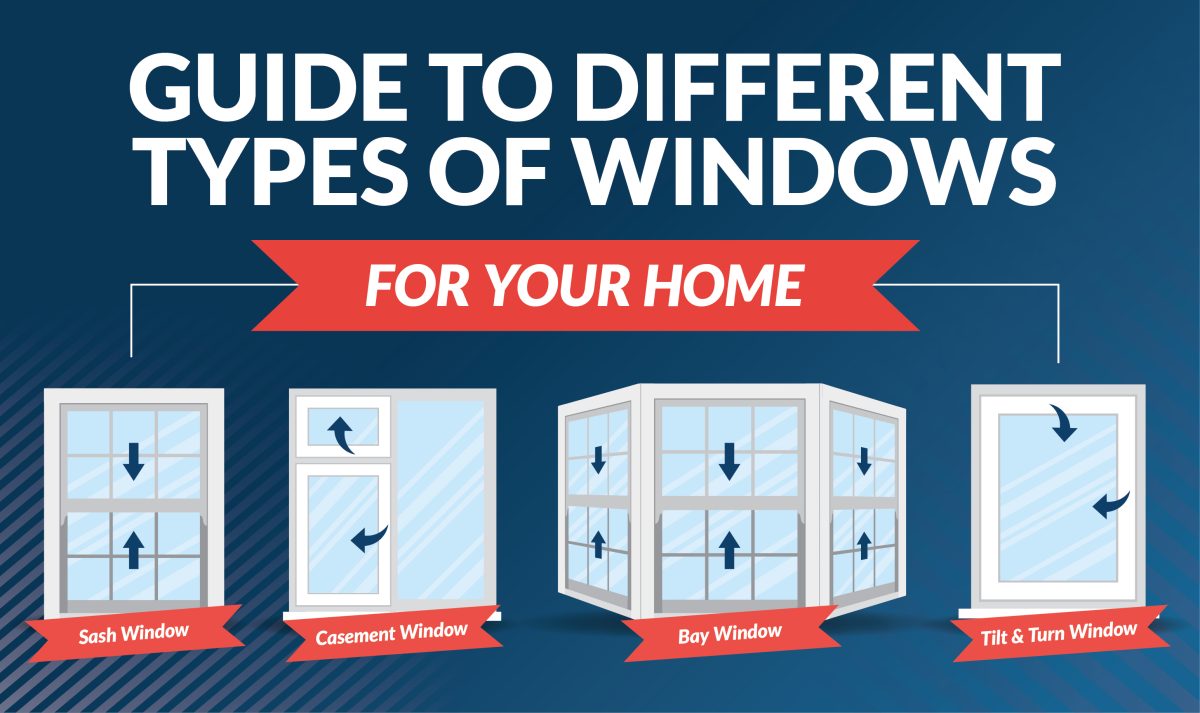
Which Type of Windows is Best For a Home?
The best type of windows for your home depends on what you value most, whether that’s energy efficiency, style, or ease of maintenance. uPVC casement windows are a reliable all-round option, offering durability and good insulation at an affordable price. Aluminium frames provide a modern look with slim sightlines and strength, making them ideal for contemporary builds.
Sash windows, on the other hand, bring a touch of timeless character and are especially suited to period properties, though they’re increasingly chosen for modern homes too. Bay and bow windows are perfect if you want to maximise natural light and create a sense of space, while tilt and turn styles are handy for flexible ventilation and easy cleaning. Ultimately, the best choice is one that balances your home’s design with practical needs.
Frequently Asked Questions
How many types of windows are there in UK?
Homeowners in the UK can choose from a wide variety of window designs. The most common types of windows include casement, sash, tilt and turn, bay, and bow, along with design variations such as French windows, shaped windows, and contemporary aluminium frames.
What is the most popular type of window?
Casement windows are by far the most popular in modern homes across the UK. Their simple design, energy efficiency, and versatility mean they’re ideal for tight budgets and contemporary style. For traditional homes, sash windows have always been a popular choice, due to their heritage style.
What are old fashioned windows that slide up and down called?
These are sash windows. Recognised for their timeless vertical sliding design, they have been a feature of British architecture since the 17th century and remain a favourite for period homes and modern properties alike.
What is the cheapest style of window?
uPVC casement windows are generally the most affordable option. They’re cost-effective to manufacture, easy to install, and low maintenance, making them ideal for those on a budget without compromising on performance.
What is the new trend for windows?
One of the biggest trends in window design right now is the move towards slim frames paired with high-performance glazing. Slim aluminium frames create a sleek, contemporary look while allowing for larger panes of glass that maximise natural light and views. Along with style, energy efficiency is a top priority, with many homeowners choosing improved glazing and lower U-values to lower bills and make their homes more comfortable year-round. This combination of modern aesthetics and practical performance makes slim, energy-efficient windows a leading choice for today’s homes.

You May Also Be Interested In:
- Complete Guide to Sliding Sash Windows
- What Are The Most Energy Efficient Windows?
- 4 Historical Styles of Sliding Sash Windows
- What’s The Difference Between a Bay and a Bow Window?
- What Is the Difference Between Sliding Sash Windows and Casement Windows?
- We’ll see you at the Glazing Summit! - 2 October 2025
- Guide to Different Types of Windows for Your Home - 11 September 2025
- Double vs Triple Glazing: Which Is Better for Your Home? - 6 August 2025
Please note, our news articles are relevant and accurate at the time of release, but as technical developments dictate, and times goes by the information in this article may no longer be applicable. If you have questions, please contact us using our online contact form or call us on 03332 412 240.

